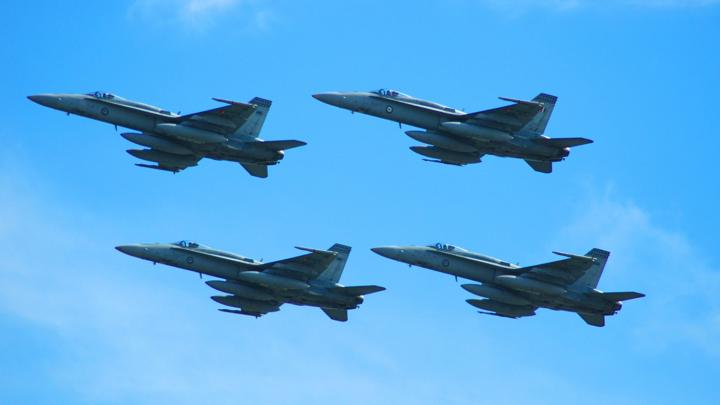Picture this scenario: you've signed up for taking the new in-laws Geraldine and Bruce on their first flight with you. You've chosen the sleepy but picturesque little airfield just over the ranges.
They're going to love it, especially Bruce, whose clubs are in the back of your little Cessna, optimistic for a quick 9 holes.
You see the airport in the distance and a slash of silver catches your eye out to the left.
You don't know it, but it's the lead aircraft in an impressive gaggle of gliders competing for thermals under a cloud you're about to pass.
There's a soaring competition on here today. Everyone's excited. Except maybe you because you forgot to read your NOTAMs before you left home. Also, Geraldine's feeling sick.
There's a lot of mining activity in remote outback Australia so it's a really good idea to check your NOTAMs before you fly into an area. You really don't want to get caught out if there's blasting in progress.
Pete Wells, Out-n-Back host
Do your homework on NOTAMs and military restricted airspace
NOTAMs need to become your best friends. The more often you read them, the more you'll understand.
Accessing and reading current NOTAMs is an integral part of your flight planning. They advise pilots of changing circumstances at a particular location, time frame, areas, and levels that these changes will affect.
Obtaining the latest NOTAMs is important for both non-controlled and controlled aerodromes.
For example, popular events such as the annual race meets at Louth, Clare and Birdsville attract many visiting aircraft.
Special procedures will be in place that you will need to follow. Some of these might include:
- cadet flying camp at Bathurst
- scheduled blasting near Mount Isa
- a hot air balloon festival in Echuca
- runway resurfacing.
These are all good tips you'd love to have before you turn up in the circuit.
Military aircraft flying in formation
Military restricted area NOTAMs
You need to check the status of any restricted area along and nearby your planned route.
Defence use military restricted areas (RAs) for many activities. Some of these activities can be hazardous if you accidentally stray into these active areas without a clearance.
RAAF air traffic controllers can recall hours' worth of stories about the mayhem infringements of restricted airspace has caused over the years.
Such infringements are a sign of inexperience; and incomplete pre-flight planning.
You can find RAs marked on:
- Visual Terminal Charts (VTC)
- Visual Navigation Charts (VNC)
- En Route Charts (ERC).
Be practical. Save yourself some hassle and make sure the NOTAM for a particular RA affects your route.
For example, many apply to levels from 9,500 ft upwards so you can disregard if you're planning at 5,500 ft.
Read off the RA designator from your chart. Once you have done that head to the PRD section of your ERSA where you'll find information on each designated parcel of airspace.
RAs are either active at set times as per:
Many of these areas can be activated at very short notice. You must always have up-to-date information about the status of the areas.
Entering PRD areas or Airspace Group codes when requesting a Location Briefing through NAIPS will give current NOTAMs on the status of that RA.
Remember not all PRD areas are activated by NOTAM. Don't assume the area is de-active simply because there is no current NOTAM.
Aircraft flying over fire at an airshow
Conditional RA status
All RAs have an 'RA Status'. This status tells you the likelihood of getting a clearance to fly through restricted airspace. To learn more, read the ERSA PRD-1.
In ERSA, PRD areas that belong to military airspace groups will show a group code in brackets alongside the PRD identifier.
For example, R625A (AMX) indicates it is a part of the Amberley defence group.
This is useful if you are planning a route that takes you through constantly changing restricted areas. One example includes the massive expanse of the Tindal airspace in the Northern Territory.
To learn about military airspace go to the NAIPS and select ‘Restricted Area Briefing'. You can type in the group code (TNX) which will list the status of all of them.
The status of military CTR/CTA is available in a Location Briefing for the relevant aerodrome. For example, YPTN for Tindal CTR.
The procedure for requesting a clearance for these areas is the same as requesting a clearance into civil class C airspace. Call the appropriate frequency as per the ERSA but have a backup plan if a clearance is not available.
Remember, if you doubt the conditional status of an RA, assume RA3 and avoid it until you can confirm the status.
If in doubt, always ask. Once you are airborne, you can contact ATC on your area frequency and request the status of the relevant RA.
If you're outside VTC or VNC coverage, you may not be aware of any restricted airspace unless you have studied your ERC low chart. This is a vital part of your flight planning.
A WAC and a moving map GPS are not a good enough combination.
Pre-flight checklist
Use the checklist to ensure you retrieve all NOTAMs relevant to your flight. The checklist includes:
- Location-specific NOTAM (include any alternate aerodromes). Australia does not NOTAM fuel availability except for major disruptions or long-term outages because of supply issues. If planning to refuel you must contact the aerodrome operator as provided in ERSA.
- PRD NOTAM (individual PRD or Airspace Groups).
- FIR NOTAMS.
- Head Office NOTAM (YSHO). Head Office NOTAMs are not limited to a particular location but affect areas throughout Australia. These are vital to include in your pre-flight planning.
Refer to the NOTAM section of AIP GEN 3.1 or speak to the Briefing Office 1800 805 150 for help with reading NOTAMs.
You can also call the Briefing Office for help with:
- location codes
- FIR codes
- PRD codes
- other briefing requirements.



